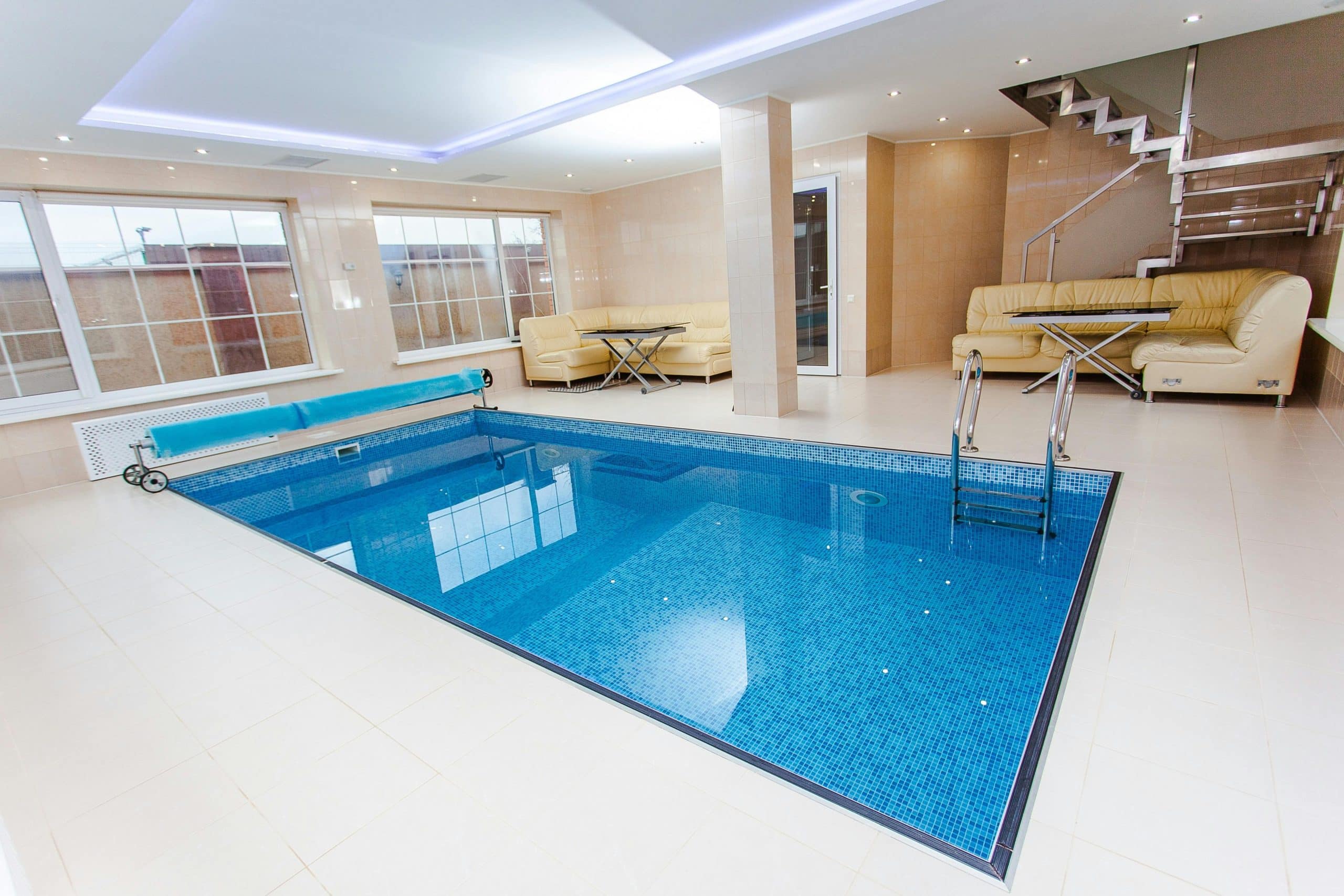How do you create a low-maintenance landscape around your UK pool that enhances visual appeal?

Creating a low-maintenance landscape around your pool is not just about choosing the right plants and design elements. It's about understanding your space, factoring in the practical aspects such as water and maintenance needs, and successfully marrying these with aesthetics to create an outdoor setting that is both beautiful and functional. In this guide, we will offer you some insights and advice on how to achieve just that for your garden in the UK.
Understanding Your Space and Design Needs
Before you commence any landscaping project, it is crucial to understand your yard. This will help you determine the type of garden design that best suits your space. So, assess the area around your pool. Consider factors such as the size, shape, and orientation of your yard, the amount of sunlight it receives, its natural incline or slope, and the current type of soil.
A lire également : What are the steps to safely add a multi-purpose pool house to your UK property?
A photo of your garden can assist you in visualising potential designs. Sketch out a rough plan, marking out the pool and any existing structures or plants you plan to incorporate into your landscape design. You might find it helpful to divide your yard into different zones based on their function – relaxation, dining, or play.
Once you understand your space, you can begin to consider your design needs. Think about your lifestyle and how you use your outdoor area. Do you want a space for entertaining, or a quiet oasis for relaxation? How much time are you willing to devote to garden maintenance? Answering these questions will guide your design choices and ensure your new landscape serves your needs, while being manageable in terms of upkeep.
A lire en complément : How can you implement a solar-powered pool monitoring system in a UK home?
Choosing the Right Plants
The plants you select for your landscape design can make a significant difference to both the look and maintenance needs of your garden. In the UK, there are a plethora of plant species that are hardy, require minimal care, and can add splendour to your pool area.
One crucial factor is to consider plants that can tolerate the microclimate created by your pool. These plants should resist chlorinated water and thrive in the full sun. Some examples include grasses like Miscanthus sinensis and Pennisetum alopecuroides, which also provide texture and movement in your garden. Low-growing plants such as sedum and thyme are excellent for providing ground cover and reducing weed growth. Also, consider incorporating native plants into your design. They will not only be adapted to the local climate but will also attract beneficial insects and birds, increasing the biodiversity of your garden.
It is worth noting that you should avoid planting trees with invasive root systems near your pool, as these can damage the pool structure over time. Also, consider the leaf fall - plants that shed leaves or needles can increase pool maintenance.
Water and Maintenance Considerations
The presence of a pool in your landscape design significantly impacts your water and maintenance considerations. You need to think about how you will supply water to the plants around your pool area, without causing damage or unnecessary work.
Drip irrigation systems are a fantastic solution for poolside gardens. They deliver water directly to the plants' roots, reducing evaporation and unnecessary water splash into your pool. Mulching around your plants can also help retain soil moisture and suppress weed growth, cutting down your maintenance time.
Consider incorporating hardscaping elements such as patios, decks, or stepping stones in your design to create walkways and reduce the amount of grass and plant beds that will require watering and maintenance. A well-placed bench or sun lounger can provide a practical and visually appealing spot to dry off and enjoy the garden view.
Incorporating Natural Features
Incorporating natural features into your poolside landscape can create a stunning visual effect and enhance your outdoor space's overall appeal. Water features such as fountains, waterfalls, or a cascading stream can create a peaceful ambiance and mask unwanted noise. They also have a practical purpose – the water movement can help to keep your pool water cleaner by reducing stagnant water areas.
Rock gardens, boulders, or a pebble beach can evoke a sense of rugged natural beauty. They also require zero maintenance, making them a win-win addition to your design. Plus, strategically placed rocks can double up as informal seating or a fun jumping-off point for the little ones.
Creating a Cohesive Landscape Design
Achieving a cohesive design is all about ensuring that all elements of your yard blend seamlessly together. From the plants to the hardscaping and any additional features, everything needs to collaborate and complement each other.
One way to achieve this is by repeating design elements throughout the garden. This could be a particular plant type, a specific colour, or a material used in your hardscaping. This creates a sense of harmony and balance in your design.
Another aspect to consider is the transition from your pool to the rest of the garden. Gradually transition from exotic poolside plants to your garden's more typical vegetation can create a natural, seamless flow.
Remember, the goal is to create a space that feels like a natural extension of your home, rather than an isolated area of your yard.
Remember, the ultimate goal is to create a visually appealing, low-maintenance landscape around your pool that enhances your outdoor living experience. With careful planning and consideration, you can transform your pool area into a stunning focal point within your garden, creating a space that you and your family will cherish for years to come.
Incorporating Hardscaping and Retaining Walls
In the quest for a low-maintenance yet visually appealing poolside landscape, you can't overlook the role of hardscaping. This refers to the non-living elements in your garden, such as patios, decks, paths, and retaining walls.
Designing your outdoor space with hardscaping in mind can enhance the functionality and aesthetic appeal of your pool area. It can provide defined spaces for relaxation or dining, offer a contrast to the softer plant elements, and, importantly, reduce the amount of watering and maintenance required.
Retaining walls, in particular, can play a key role in your landscaping design. They can help manage water runoff, protect your pool structure from soil erosion, and offer an opportunity to introduce multi-level design into your yard. This can create an interesting visual dynamic and make the most of a sloping garden.
When choosing materials for your hardscaping, consider their durability and their ability to complement your overall design aesthetic. Natural stone, brick, and concrete are popular choices for their versatility and longevity.
Remember, your hardscaping should work with the natural flow of your yard, guiding the eye and creating a sense of unity within your design. A well-placed deck or patio can offer a seamless transition from your pool to the rest of your garden, enhancing the sense of cohesion in your outdoor space.
Conclusion: Bringing It All Together
In conclusion, creating a low-maintenance landscape around your pool that enhances visual appeal involves a careful balance of understanding your space, choosing the right plants, and incorporating hardscaping and natural features.
From assessing your yard's unique characteristics to selecting hardy, pool-friendly plants, and designing functional yet appealing hardscaping, your goal should be to create a cohesive, visually stunning outdoor space that requires minimal upkeep.
Don't forget to think about water and maintenance needs when planning your landscape design. Consider solutions such as drip irrigation systems or mulching to reduce water usage and maintenance time. Hardscaping elements like patios, decks or retaining walls can not only add to your garden's aesthetic, but also minimise the amount of grass and plant beds that need watering and care.
Incorporate natural features such as waterfalls or rock gardens for a visually appealing and low-maintenance addition to your pool area. These can create a peaceful ambience, mask unwanted noise, and aid in keeping your pool water clean.
Overall, creating a low-maintenance landscape around your pool is an opportunity to enhance your outdoor living experience. With thoughtful planning, you can transform your pool area into a beautiful focal point of your garden, creating a space for relaxation and enjoyment that will remain easy to maintain for years to come.
Remember, the goal is to create an outdoor space that feels like a natural extension of your home and provides a peaceful retreat, where the worries of the world can be left at the garden gate. With these tips in mind, you're well on your way to achieving that perfect, low-maintenance poolside landscape.
So, continue reading our other articles for more landscaping ideas and start planning your dream backyard today!
